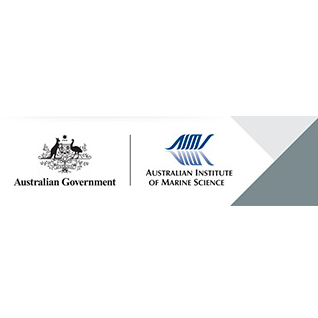Brief description
Two field surveys were undertaken for this study. In June 2003, Mermaid Reef (Rowley Shoals, unfished MPA) and Scott Reef (MOU74 Box, currently fished) were surveyed. In October 2004, Ashmore and Cartier Reefs (MOU74 Box, historically fished) and Clerke and Imperieuse Reefs (Rowley Shoals, unfished MPAs) were surveyed.In both field surveys, BRUVS (TM) were deployed in 2 modes. Firstly, at all reefs they were deployed along depth contour lines with each unit separated by approximately 400m in the shallow (5-30m) reef crest and deeper reef slope (40-70m) on the outside of reefs, and on the lagoon floor (20-30m) where these could be accessed by surface vessels. Secondly, at Scott, Ashmore and Mermaid Reefs a zodiac was allowed to drift in deep (50-300m+) water 500 m off the edge of drop offs and BRUVS (TM) hung from the side at 15 m depth.The total numbers of benthic BRUVS (TM) deployments at each locality were: Ashmore Reef, 58; Cartier Reef, 6; Scott Reef, 24; Mermaid Reef, 30; Clerke Reef, 24; and Imperieuse Reef, 41. The majority of reef deployments occurred in deep (40-70m) water and all deployments (including zodiac deployments) were spread throughout daylight hours from 07.00 - 16.00 hrs.In the 2003 pilot surveys, at Mermaid and Scott Reefs, interrogation of each tape provided the time the BRUVS (TM) settled on the seabed and for each shark: its species; the time of first sighting; time of first feeding at the bait; a coarse initial estimate of length; and a list of fish species. This enabled the identification of different sharks on each tape for cumulative summaries of shark visits to be developed for each BRUVS (TM) set. In the 2004 surveys at Ashmore, Cartier, Clerke and Imperieuse Reefs, interrogation of each tape provided the time the BRUVS (TM) settled on the seabed and, for each species of shark and fish, the time of first sighting, time of first feeding at the bait, the maximum number seen together in any one time on the whole tape (MaxN), the time at which MaxN occurred, and the intraspecific and interspecific behaviour. No attempts at measurement were made in these 2004 surveys, but fish and sharks were classified as 'adult' or 'juvenile', based on their size. A 'reference collection' of images of each species was made from the BRUVS (TM) tapes, and identifications based on these images were verified by taxonomists and other fish biologists. The benthos visible in each BRUVS (TM) set was classified and an image was stored for later reference. In 2003, the deployment of BRUVS (TM) was investigated as part of a pilot study to develop non-destructive techniques for rapid assessment of shark abundance in northern Australia.These data were later included in a larger study of reefs within the MOU74 Box and the Rowley Shoals, with the following aims:1) to sample fish and shark assemblages at Ashmore and Cartier Reefs within the MOU74 Box (historically fished reefs, now Marine Protected Areas - MPAs) and Clerke and Imperieuse Reefs (unfished reefs) in the Rowley Shoals.2) to integrate data from the 2003 BRUVS (TM) surveys (Scott Reef- presently fished, MOU74 Box, and Mermaid Reef, MPA, Rowley Shoals) into results to provide a comprehensive picture of the status of shark stocks within the MOU74 Box in comparison to unfished reefs (Rowley Shoals) nearby.3) to provide a preliminary assessment of the status of reef fishes on Ashmore and Cartier Reefs within the MOU74 Box (historically fished reefs, now MPAs) in comparison to Clerke and Imperieuse Reefs (unfished reefs) in the Rowley Shoals. In recognition of the long standing use of marine resources of northern reefs as a small scale, traditional fishery, the Australian and Indonesian governments negotiated a memorandum of understanding (MOU74) that allows access by Indonesian fishermen to an area of 50,000 km² within the Australian Exclusive Economic Zone (AEEZ). Within this area lie 6 coral reef systems, the northern most of which are Ashmore and Cartier Reefs. Concern over the status of stocks of reef resources targeted by Indonesian fishermen led to a ban on all fishing at Ashmore Reef in 1988 and at Cartier Reef in 2000. One small area of the West Island lagoon of Ashmore Reef was made exempt from this restriction to allow subsistence fishing by crews. The primary aim of this restriction was to allow over-fished stocks of bêche-de-mer and trochus to recover. While a variety of surveys had concluded that there was little evidence that reef fishes had been over-exploited on reefs within the MOU74 Box, there was little evidence on which the status of shark resources could be assessed.The child records attached to this record refer to benthic BRUVS (TM) deployments only.Lineage
Maintenance and Update Frequency: notPlannedModified: 23 06 2025
text: westlimit=122.863767; southlimit=-12.358602; eastlimit=123.226817; northlimit=-12.152425
text: westlimit=123.499302; southlimit=-12.566499; eastlimit=123.6068; northlimit=-12.472869
text: westlimit=121.687909; southlimit=-14.27023; eastlimit=122.023691; northlimit=-13.833283
text: westlimit=119.584023; southlimit=-17.159543; eastlimit=119.663401; northlimit=-17.001171
text: westlimit=119.298285; southlimit=-17.410484; eastlimit=119.402718; northlimit=-17.227155
text: westlimit=118.868911; southlimit=-17.679335; eastlimit=118.988496; northlimit=-17.476648
Surveys of shark and fin-fish abundance on reefs within the MOU74 Box and Rowleys Shoals using baited remote underwater video systems. Prepared for the Australian Government Department of the Environment and Heritage: Meekan MG, Cappo MC, Carleton JH and Marriott R (2006) Surveys of shark and fin-fish abundance on reefs within the MOU74 Box and Rowleys Shoals using baited remote underwater video systems. Prepared for the Australian Government Department of the Environment and Heritage. 27 p.
local : articleId=7284
Traditional fishing puts the bite on sharks: Cappo M, Meekan MG, Perry M, McCauley RD and Harvey ES (2004) Traditional fishing puts the bite on sharks. Australasian Science 25: 29-32.
local : articleId=6785
Non-destructive techniques for rapid assessment of shark abundance in northern Australia. Produced for Australian Government Department of Agriculture, Fisheries and Forestry: Meekan MG and Cappo M (2004) Non-destructive techniques for rapid assessment of shark abundance in northern Australia. Produced for Australian Government Department of Agriculture, Fisheries and Forestry. Australian Institute of Marine Science. 29 p.
local : articleId=6696
- global : 4c3d9d10-6652-11dc-b5b7-00008a07204e


